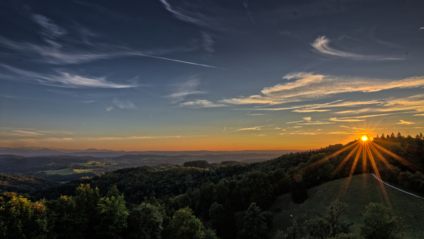
Committing to phase out fossil fuels would mark a welcome sea change in climate leadership for Canada. Other countries would sit up and take notice.
However, stopping fossil fuel combustion alone won’t solve the climate crisis.
The latest report of the Intergovernmental Panel on Climate Change (IPCC) says impacts of climate change such as hot and cold extremes will persist even if human GHG emissions stop immediately. Sea level rise is locked in for centuries. Net-negative emissions may be needed to stabilize global temperature.
Far from negative emissions, humans emitted the highest amounts of GHGs in history during the decade 2010-2019. Of human-caused CO2 emissions, 31% were stored by terrestrial vegetation, 23% by the ocean, and 46% ended up in the atmosphere.
Luckily, natural carbon sinks -- carbon stored by lands and oceans-- have kept pace with increasing human emissions. The IPCC says with high confidence that rising atmospheric CO2 has increased land carbon storage through “CO2 fertilization of photosynthesis and increased water use efficiency.”
But we sit teetering on a precipice. The IPCC says if high emissions continue, land will flip to a carbon source: “The probability of crossing uncertain regional thresholds (e.g., high severity fires, forest dieback) increases with climate change (high confidence).”
This has already happened in Canada and Brazil. Stresses on natural ecosystems from heat waves, droughts, insect outbreaks and forest fires -- combined with excessive timber harvests, agricultural conversion, land degradation, wetland drainage, and housing developments -- have destroyed our terrestrial carbon sinks.
We and the land we occupy are net carbon emitters. Canadians have two big, inter-related challenges: achieve net zero fossil fuel emissions, and rebuild ecosystems and their capacity for carbon dioxide removal (CDR).
The IPCC says “Deployment of CDR, particularly on land, can also affect [positively or negatively] water quality and quantity, food production and biodiversity, with consequences for the achievement of related sustainable development goals (high confidence)… A wide range of co-benefits are obtained with methods that seek to restore natural ecosystems or improve soil carbon (high confidence).”
So let’s go for co-benefits – holistic solutions that protect biodiversity, provide sustenance and help the climate.
Three global environmental treaties came from the 1992 Rio Earth Summit. They meet and deal separately with climate change, biodiversity and desertification.
This isn’t working. These crises interact. Isolated approaches can’t solve them.
Thomas Homer Dixon points out in Commanding Hope that meeting outputs are “too elaborately technocratic and too blandly anodyne to truly motivate us.” He calls for a global project engaging all humanity that rebuilds our connection to nature: “we can create the conditions for nature’s complexity to bloom in new ways across the planet’s surface – not just its remaining unpopulated zones, but in our densest cities too.”
Others thinking along similar lines are Suzanne Simard in Finding the Mother Tree, Robin Wall Kimmerer in Braiding Sweetgrass, and Douglas Tallamy in The Nature of Oaks. Tallamy emphasizes restoration of species such as oaks that are native to a given area and support the highest diversity of other life forms. He says that the mutual exclusion model -- humans here, nature someplace else – is a dismal failure.
Most of the world’s Indigenous peoples would reject that model as well.
COP 26 delegates in Glasgow will mostly talk about technocratic solutions – national targets, carbon taxes, carbon credit trading, coal phase-outs, renewable subsidies, etc. The biodiversity crowd meeting in Kunming, China next April will tend to focus on nature apart from humans - protected areas, endangered species, etc.
The UN Convention to Combat Desertification, with its emphasis on people (women in particular) restoring nature, is closest to what’s needed. But it is not sufficiently supported by rich nations (Canada withdrew in 2013, then re-joined in 2017). Parties to that convention meet next May in Côte d'Ivoire.
We can’t afford to think in silos anymore. Bring back nature everywhere.
